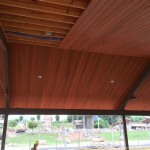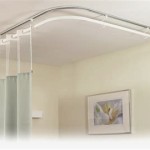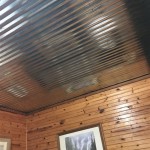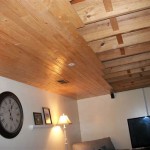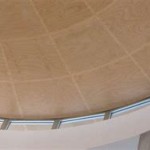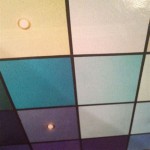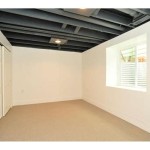What Is The Best Ceiling Fan With Light And Remote?
Ceiling fans with lights and remote controls offer a trifecta of benefits: energy-efficient cooling, illumination, and convenient operation. Selecting the “best” ceiling fan is a subjective process, influenced by factors such as room size, style preferences, budget constraints, and desired features. This article aims to provide a comprehensive overview of the key considerations and top contenders in the market, enabling informed decision-making when choosing the ideal ceiling fan for a specific need.
Several crucial aspects must be considered before making a purchase. These include the fan's size and airflow capacity, the type and brightness of light fixture, the remote control's functionalities, the fan motor's efficiency and noise level, and the overall aesthetic appeal of the unit. Compromises in any of these areas can lead to dissatisfaction with the fan's performance or integration into the living space.
Understanding Room Size and Fan Size
The primary function of a ceiling fan is to circulate air, providing a cooling effect and promoting energy efficiency by reducing the need for air conditioning. Therefore, choosing a fan with an appropriate blade span for the room's dimensions is paramount. A fan that is too small will not provide adequate airflow, while one that is too large can create discomfort or excessive noise.
Generally, rooms up to 75 square feet benefit from fans with a blade span of 36 inches or less. Rooms between 76 and 144 square feet require a 42-inch fan. For rooms ranging from 145 to 225 square feet, a 52-inch fan is typically recommended. Larger spaces, exceeding 225 square feet, may necessitate the use of a 60-inch or larger fan, or even multiple fans strategically positioned for optimal air circulation. Specific product literature will almost always contain a recommended room size that consumers should use as a guide.
In addition to room size, ceiling height is another factor to consider. Low-profile fans, also known as hugger fans, are designed for rooms with lower ceilings (typically less than 8 feet). Standard fans, which hang lower from the ceiling, are suitable for rooms with higher ceilings. For ceilings exceeding 9 feet, a downrod extension may be necessary to position the fan at the optimal height for effective air circulation—typically between 8 and 9 feet from the floor.
Evaluating Lighting Options and Brightness
Ceiling fans with lights serve a dual purpose, providing both illumination and air circulation. The type of light fixture and its brightness are significant considerations. Many ceiling fans integrate LED lights, which are energy-efficient, long-lasting, and available in various color temperatures, ranging from warm white to cool white. Color temperature is measured in Kelvins (K), with lower numbers indicating warmer, more yellow light, and higher numbers indicating cooler, more blue light.
The required brightness depends on the size of the room and the desired ambiance. Brightness is measured in lumens, with higher lumen values indicating brighter light. For general room lighting, a fixture with 800 to 1600 lumens is often sufficient for smaller spaces. Larger rooms may require 1600 lumens or more. Some ceiling fans offer dimming capabilities, allowing for adjustable brightness levels to suit different needs and preferences.
The style of the light fixture also influences the overall aesthetic of the ceiling fan. Options include integrated LED panels, frosted glass shades, and exposed bulb designs. The choice depends on the desired level of illumination and the overall design of the room. Consumers should be mindful of the type of bulb required for the fixture. If the fixture uses standard bulbs, like the E26 or E12 base, then the option to change that bulb to a smart bulb increases flexibility for homeowners already utilizing smart home technology.
Assessing Remote Control Functionality and Features
A remote control adds a layer of convenience to ceiling fan operation, allowing for adjustments to fan speed, light brightness, and other settings from a distance. The functionality and features of the remote control are crucial factors to consider. Basic remote controls typically offer fan speed control (low, medium, high) and light on/off functionality. More advanced remote controls may include features such as dimming control, reverse function (for seasonal use), timer settings, and learning capabilities.
The reverse function is particularly useful, as it allows the fan to rotate clockwise during the winter months, pushing warm air down from the ceiling and improving heating efficiency. This can help to reduce energy consumption and lower heating costs. The timer setting allows users to pre-program the fan and light to turn on or off at specific times, further enhancing convenience and energy savings.
Some remote controls offer learning capabilities, allowing them to be programmed to control multiple ceiling fans. This can be particularly useful in homes with several ceiling fans in different rooms. A remote control with a clear display and intuitive button layout enhances ease of use. It is also important to consider the range of the remote control, ensuring that it can effectively control the fan from various locations within the room. Some remotes are also bluetooth enabled, allowing users to control their homes lighting and fans from their smart devices, like their phones, tablets, or smart watches.
Many modern ceiling fans are compatible with smart home systems, such as Amazon Alexa and Google Assistant. This allows users to control the fan using voice commands, further enhancing convenience and integration with other smart home devices. Integration with smart home systems also allows for complex scheduling and automated control, based on factors such as temperature and occupancy.
Moreover, the type of remote receiver integrated into the fan is another important factor. Some receivers are more robust and reliable than others, and can handle higher power loads. A high-quality receiver ensures smooth and consistent operation of the fan and light, without flickering or other issues.
Several brands offer ceiling fans with various features and functionalities. Prominent brands include Hunter, Casablanca, Minka-Aire, and Fanimation. Hunter is well-known for its reliable motors and classic designs. Casablanca offers high-end fans with advanced features and superior craftsmanship. Minka-Aire is recognized for its contemporary designs and innovative technology. Fanimation specializes in unique and stylish fans with a wide range of options.
When evaluating specific models, consider the motor type (AC or DC). DC motors are more energy-efficient and quieter than AC motors. They also offer a wider range of speed settings and smoother operation. However, DC motor fans tend to be more expensive than AC motor fans.
The style of the ceiling fan should complement the overall decor of the room. Options range from traditional to contemporary, with various finishes and blade styles available. Consider the color and material of the blades, the finish of the motor housing, and the design of the light fixture when making a selection. Blade materials range from wood and metal to plastic and composite materials. The choice depends on the desired aesthetic and the environmental conditions of the room. For example, damp-rated fans are suitable for use in bathrooms and covered outdoor areas.
Prior to purchase, reading online reviews from other consumers can provide valuable insights into the performance, reliability, and quality of the ceiling fan. Pay attention to comments regarding motor noise, light output, remote control functionality, and ease of installation. Consider reviews from multiple sources to obtain a balanced perspective.
Installation is another crucial consideration. While some consumers may be comfortable installing a ceiling fan themselves, it is generally recommended to hire a qualified electrician, especially if electrical wiring needs to be altered or if the fan is heavy or complex. Proper installation ensures safe and reliable operation and prevents potential hazards.
The lifespan of the ceiling fan is dependent on the quality of the components, the frequency of use, and the environmental conditions. Choosing a fan from a reputable brand with a solid warranty can provide peace of mind. Warranties typically cover the motor, but may also extend to other components, such as the light fixture and remote control. Before buying, check the warranty, and the process to use it, should you need to.
The cost of a ceiling fan with light and remote control can vary significantly, depending on the features, quality, and brand. Basic models can be found for under $100, while high-end models can cost several hundred dollars or more. It is important to set a budget and prioritize the features that are most important. Also, be mindful of the cost of other components, such as light bulbs, to ensure that these are accounted for as part of the total cost.
Consider any included accessories when evaluating a ceiling fan. Some models may come with extra downrods, blade balancing kits, or replacement remote controls. These accessories can add value and convenience.
In summary, selecting the best ceiling fan with light and remote involves careful consideration of room size, lighting needs, remote control functionality, motor efficiency, stylistic preferences, and budget constraints. By thoroughly evaluating these factors, consumers can make an informed decision and choose a ceiling fan that provides optimal performance, comfort, and convenience for years to come. The best option will be the one that optimally balances these factors for individual needs and preferences.

Home Decorators Collection Merwry 52 In Integrated Led Indoor Matte Black Ceiling Fan With Light Kit And Remote Control Sw1422mbk The Depot

Karson 52 Inch 5 Blade Best Ceiling Fan With Light Remote Black Wo Ledmyplace

Bennett With Led 3 Light 44 Inch Ceiling Fan Hunter

Carro Jett 52 In Dimmable Led Indoor Black Smart Ceiling Fan With Light And Remote Works Alexa Google Home Hs523a1 L22 B2 1 Fm The Depot

How To For A Ceiling Fan Reviews By Wirecutter

Best S Modern Enclosed Ceiling Fan Indoor With Remote Control And Bladeless Rust Red Industrial Light Kit Com

6 Best Ceiling Fans Of 2024 Reviewed

Kendrick 52 Inch 3 Blade Best Ceiling Fan With Led Light Kit Remote Ledmyplace

Bennett Low Profile Smoked With Light 52 Inch Ceiling Fan Hunter

Home Decorators Collection Ashby Park 52 In White Color Changing Integrated Led Brushed Nickel Ceiling Fan With Light Kit And Remote Control 59252 The Depot
Related Posts

